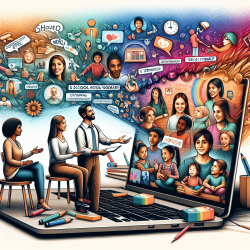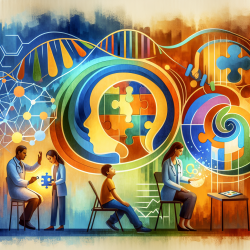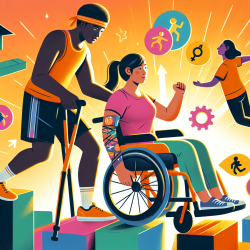Introduction
In the field of speech-language pathology, understanding the social and emotional development of children is crucial. The recent study titled "Compassion, Discrimination, and Prosocial Behaviors: Young Diasporic Chinese During the COVID-19 Pandemic" provides valuable insights into how compassion and perceived discrimination influence prosocial behaviors in youths. This blog aims to explore these findings and discuss their implications for practitioners working with children, particularly in the context of online therapy services like those provided by TinyEYE.
Understanding Prosocial Behaviors
Prosocial behaviors are actions intended to benefit others, such as volunteering and charitable giving. These behaviors are essential for the social development of children and adolescents. The study highlights that compassion is a significant predictor of prosocial behaviors, while discrimination can also play a role in enhancing these behaviors under certain conditions.
Key Findings from the Study
- Compassion was identified as a proximal predictor of prosocial behaviors among young diasporic Chinese during the COVID-19 pandemic.
- Perceived discrimination independently predicted participation in volunteering and could enhance the association between compassion and charitable giving.
- Prosociality in youths is sensitive to social contexts, particularly racial discrimination.
Implications for Practitioners
Practitioners working with children can leverage these findings to foster prosocial behaviors by:
- Encouraging compassion through empathy-building activities and discussions about helping others.
- Addressing and discussing experiences of discrimination to empower children and promote resilience.
- Creating inclusive environments that recognize and celebrate diversity, reducing the impact of discrimination.
Encouraging Further Research
The study suggests that racial discrimination should be considered in future prosocial studies involving ethnic and racial minority youths. Practitioners are encouraged to engage in further research to explore how these factors interact and influence children's development. Understanding these dynamics can lead to more effective interventions and support for children in diverse communities.
Conclusion
The findings from this study provide valuable insights into the factors influencing prosocial behaviors in children. By understanding the roles of compassion and discrimination, practitioners can better support children's social and emotional development. For those interested in delving deeper into this research, the original study can be accessed through the following link: Compassion, Discrimination, and Prosocial Behaviors: Young Diasporic Chinese During the COVID-19 Pandemic.










